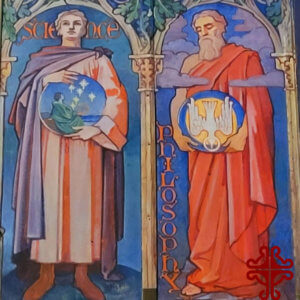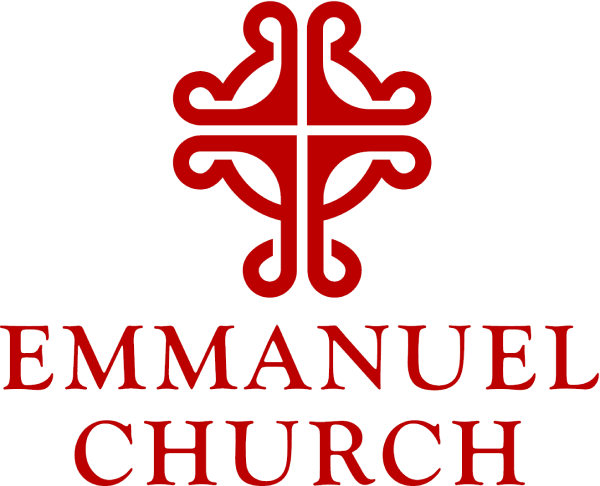In the beginning was the Word
In the beginning was the Word, and the Word was with God, and the Word was God. He was in the beginning with God. All things came into being through him, and without him not one thing came into being. What has come into being in him was life, and the life was the light of all people. The light shines in the darkness, and the darkness did not overcome it.
Those words have to be some of the most beautiful poetry anywhere, no matter what the language. Even if you’re not a poet or a lover of language, the sheer immensity of the idea just has to knock you back. John’s gospel was originally written in Greek. And Word — as in In the beginning was the Word — comes to us from the Greek word Logos. Philosopher/blogger Justin Taylor explains that in ancient Greek, Logos has many meanings, but none of those meanings points directly to our English understanding of Word.
Creative Energy
 Instead, the biblical Greek LOGOS meant something way bigger than that some letters or a collection of sounds that point to a certain meaning. LOGOS referred to the power of reason, the natural order of things, and the principle of relation and harmony that exists both within the natural fabric of the universe and within the human mind. The idea of LOGOS refers to the underlying Order of the Universe, the blueprint on which all creation is based. In short, LOGOS refers to the mind and order of God. The author of John’s gospel is saying that in the beginning with God was NOT a human or fleshly man, but a harmony and natural order of everything.
Instead, the biblical Greek LOGOS meant something way bigger than that some letters or a collection of sounds that point to a certain meaning. LOGOS referred to the power of reason, the natural order of things, and the principle of relation and harmony that exists both within the natural fabric of the universe and within the human mind. The idea of LOGOS refers to the underlying Order of the Universe, the blueprint on which all creation is based. In short, LOGOS refers to the mind and order of God. The author of John’s gospel is saying that in the beginning with God was NOT a human or fleshly man, but a harmony and natural order of everything.
In the Fall of 2018, renowned scholar David Bentley Hart published what a reviewer in The Atlantic called a mind-bending translation of the New Testament. Hart called the translation of LOGOS as the Word “a curiously bland and impenetrable designation for the heady concept expressed in the original Greek of the Gospels as Logos,” suggesting that Word is more usefully translated in our context as the creative energy or activity of God. And the beautiful poetry of John’s gospel’s first words is a powerful way of expressing God’s presence on earth in Jesus, God incarnate.
With God and In God
Matthew’s gospel introduces us to Jesus with a long genealogy that begins with Abraham and extends to Joseph, including all of the heroes of the faith along the way — Jacob, Tamar, Rahab, Ruth, Bathsheba, Mary, Mother of God, and Joseph, her husband. Mark’s gospel begins with the excited announcement “The good news of Jesus Christ the Son of God” and moves directly to Jesus’ earthly ministry. Luke’s gospel begins with the birth narrative we read Christmas Eve, about Mary and Joseph’s long trek to Bethlehem to be counted for the census.
 But John’s gospel is different. Instead of focusing on Jesus’ arrival as God incarnate in the form of a human baby, John’s gospel starts with Jesus’ origin: with God and in God. Jesus is the creative energy or activity of God. Jesus was in the beginning with God and is God. John’s gospel turns our gaze from our own place on earth, and our own context, to God’s creative energy and our place in that energy as people of God.
But John’s gospel is different. Instead of focusing on Jesus’ arrival as God incarnate in the form of a human baby, John’s gospel starts with Jesus’ origin: with God and in God. Jesus is the creative energy or activity of God. Jesus was in the beginning with God and is God. John’s gospel turns our gaze from our own place on earth, and our own context, to God’s creative energy and our place in that energy as people of God.
John’s gospel fully embraces the mystery of divinity — a mystery that is not easy to communicate, express, or explain. But poetry, music, and art can help us to express what is absolutely true, but difficult to say, and even more difficult to understand. For example, during the time I spent in Palestine and Israel, I saw many Orthodox churches filled with icons — very detailed and elaborate paintings of Jesus, John the Baptist, and other figures of faith. But it took some time and study before I was able to “read” the icons, murals, and frescoes in these 1500 year old churches, and to begin to understand how they worked in faith.
Reading Icons
What icons do is help us to understand ideas that are really bigger than our understandings or the capacity of human reason. That’s one reason why we don’t say that icons are painted. Instead, they are “written” or even more accurately, “prayed.” Icon writers, who are faithful artists and theologians, retreat to pray their icons, trying to plumb the mystery of a theological claim, and to express that claim visually. They know that words can’t reach the deepest truths on their own, just like our English translation of LOGOS as “the Word” doesn’t begin to touch the breadth and depth of the theological truth that LOGOS is the creative energy or activity of God.
![]() The best way that I can think of to convey this idea now is to describe some ways that Mary is painted in icons in the Holy Lands. You know that Moses experienced God’s presence in the burning bush that was covered with flames and yet not consumed. And you know that the Book of Exodus tells the story of the Ark of the Covenant, that contained the stone tablets of the law that God gave Moses. The Ark, and the stone tablets, represented God’s presence among God’s people.
The best way that I can think of to convey this idea now is to describe some ways that Mary is painted in icons in the Holy Lands. You know that Moses experienced God’s presence in the burning bush that was covered with flames and yet not consumed. And you know that the Book of Exodus tells the story of the Ark of the Covenant, that contained the stone tablets of the law that God gave Moses. The Ark, and the stone tablets, represented God’s presence among God’s people.
It is not uncommon to see Mary painted in an Orthodox or Roman Catholic setting in Eastern churches surrounded, or even overlaid, with images of the burning bush and the ark of the covenant. This image expresses the theological claim that Mary mother of God carries God’s presence, just like the ark represents God’s presence among God’s people, and the burning bush represents God’s presence before Moses. There is one image at the entrance to the Mount Sinai monastery in the Sinai Peninsula in Egypt that shows Mary holding Jesus right in the center of the flames of the burning bush. The shape of the image of Mary and Jesus is the same as the bush itself, so it looks like Mary, the God-bearer, and Jesus were a part of the creative energy and activity of God that burned but did not consume the bush. John’s gospel says this with language — with words and poetry, and makes us central to this energy and its creation. What if we tell the story of how God came down at Christmas like John’s gospel does:
In the beginning was the creative energy of God, and this energy was the very activity of God, and was itself God. All things came into being through from this natural order that is present in both the universe and in the human mind, and without this natural order and God’s activity, not one thing came into being. What God’s energy has brought into being is life, and the life was the light of all people. The light shines in the darkness, and the darkness did not overcome it. Amen
